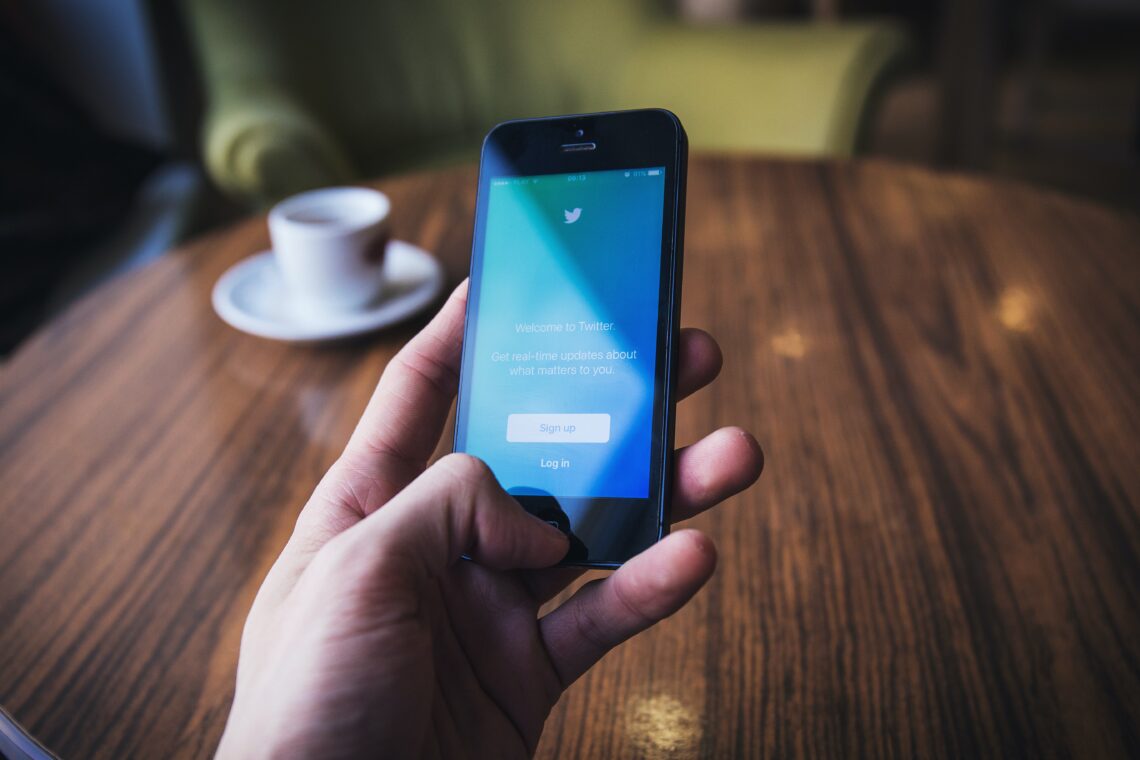Wer keinen Clubhouse-Invite in den letzten Tagen bekommen hat, ist entweder gesellschaftlich nicht relevant oder hat kein iPhone. Im schlimmsten Fall beides. Kein anderes soziales Netzwerk hat in den letzten Jahren einen solchen Hype ausgelöst. Um es kurz und knapp zu machen: Clubhouse ist der heiße Scheiß. Invites zu Clubhouse werden bei eBay für bis zu 50 Euro verkauft, in anderen Netzwerken wird um einen Einladungslink gebettelt.
Dadurch, das alles live stattfindet, hat man immer wieder das Gefühl, etwas Wichtiges zu verpassen. Der Fomo-Effekt (Fear of missing out) könnte dementsprechend höher nicht sein. In den USA ging Clubhouse im Mai 2020 an den Start und seit wenigen Wochen findet der Hype auch bei uns statt. Was Clubhouse ist, wer und ob man das braucht dazu ein Kommentar.
Clubhouse: Podcasts auf Steroide
Im Grunde ist Clubhouse ein audiobasierter Debattenclub für iPhone Nutzer. Richtig gelesen: Android-Nutzer sind fast ein Jahr nach dem Launch, noch immer außen vor. Die gute Nachricht: es soll auch irgendwann für Android verfügbar sein. Wer also ein iPhone und einen der begehrten Einladungen bekommen hat, kann sich in sogenannten Rooms mit anderen Menschen zu Themen treffen um zu diskutieren.
Jede(r) kann einen Room bzw. Raum eröffnen und dazu einladen. Im Raum gibt es Rollen, man unterscheidet zwischen Moderatoren und den Zuhörerinnen. Im Grunde kann man es mit einer Panel-Diskussion vergleichen, die man von Konferenzen kennt: Auf dem “Panel” in Clubhouse diskutieren eine beliebige Anzahl von Menschen miteinander während das Publikum zuhört.

ZuhörerInnen können sich melden und bekommen mit etwas Glück von der Moderation das Wort erteilt. Es gibt keine zeitliche Begrenzung für einen Raum und die Diskussionen sind live. Die Angst etwas zu verpassen ist also ungleich größer als bei Podcasts, denn Clubhouse-Streams werden in der aktuellen Phase nicht aufgezeichnet.
Wenn ein Raum nicht privat ist, kann jede(r) sich als ZuhörerIn in den Raum einklinken. Neben Räumen gibt es noch sogenannte “Clubs“. Clubhouse selbst schreibt dazu: ”Clubhouse-Clubs“ sind Interessen-basierte Gruppen, die Mitglieder erstellen und denen sie beitreten können. Sie sind ein wenig wie eine Kombination aus einer Facebook-Gruppe und einer Twitter-Gruppe“. Ein Raum oder Club kann prinzipiell jedes Thema behandeln. Da Clubhouse rein audiobasiert ist, wird es oft mit Podcasts verglichen. Der hauptsächliche Unterschied zum Podcast ist aber, das Clubhouse live stattfindet und sehr viel leichter von den UserInnen erstellt werden kann. Anders als bei Podcasts braucht es kein Hosting, Podcast-Plattform und man muss ich auch keine Gedanken um die Technik machen. Clubhouse ist sehr leicht in der Bedienung: App starten, Raum aufmachen, fertig.
Wie bei anderen sozialen Netzwerken kann man Personen auch folgen. Bei Clubhouse spielt die Anzahl der Follower eine noch größere Rolle. Denn Clubhouse verschickt an die Nutzer Pushnachrichten, sobald jemand aus der Follower-Liste einen Raum eröffnet. Auch wenn jemand in einen Raum betritt, ist das für die Follower sofort sichtbar. Je mehr Follower, desto voller die Räume, was wieder zu mehr Followern führt. Wenn dann noch eine Person mit vielen Followern in einen Raum kommt, wird dieser schnell sehr voll.
Clubhouse: Selbstbeweihräucherungsplattform
Der Effekt, den man aus allen Medien kennt, das man immer die gleichen Gesichter sieht, findet leider auch bei Clubhouse statt. Nur jetzt im Stundentakt. Wer sich gerne selbst reden hört, hat nun die Plattform schlechthin gefunden. Durch das Invite-System von Clubhouse bekommt das ganze zusätzlich einen elitären Touch, denn wer jetzt bei Clubhouse ist muss irgendwie wichtig sein und auch was zu sagen haben. Wo hat man schließlich die Gelegenheit Thomas Gottschalk und Sascha Lobo zusammen live zu hören und sich mitunter mit Wortbeiträgen zu beteiligen?

Diversität ist bei Clubhouse so ein Problem. Schaut man sich die Räume im deutschsprachigen Raum an, ist der Anteil der Männer sehr hoch. Zwar gibt es immer wieder Diskussionen, die von Frauen geführt oder bei denen Frauen anwesend sind, aber hier spiegelt sich das Bild der Gesellschaft wider.
Die Diskussionen zu Payment, Fintech, E-Commerce und Banking-werden, wie im echten Leben auch, männerlastig geführt. Das Einladungsprinzip von Clubhouse verstärkt den Effekt und es greift das “best Buddy Prinzip”. Freunde des eigenen Geschlechts werden in der Regel bevorzugt. Da die Anzahl der Einladungen anfänglich auf Drei begrenzt ist, führt das nicht zu mehr Diversität.
Menschen mit Behinderung dürften fast chancenlos sein. Für Gehörlose gibt es kein Audiotranskript und auch Barrierefreiheit ist bei Clubhouse kein Thema. Introvertierte Menschen sind bei Clubhouse ohnehin raus. Während man auf anderen sozialen Plattformen wie Twitter, LinkedIn und Co. sich seine Sichtbarkeit nebenher aufbauen kann, bekommt man bei Clubhouse ein Problem. Denn es braucht Zeit. Und in Zeiten von Homeschooling, Kinderbetreuung oder normaler Arbeit kann man eben nicht zwischendurch mal einen Room bei Clubhouse aufmachen. Anders als andere soziale Medien, kann Clubhouse nicht nebenher genutzt werden was am Prinzip von Clubhouse liegt: Zum einen findet alles live statt und zum anderen muss man zuhören, um alles mitzubekommen. Das geht schlecht Abends am TV.
Zwischen Qualität und Quantität
Die Qualität der Themen ist bei Clubhouse eine Wundertüte. Es gibt gute, spannende und hervorragende Diskussionen, aber auch Gelaber und Bullshit Bingo. Das Problem im Moment ist: Man sieht dem Raum die Qualität einer Diskussion nicht an, sondern kann sich nur an den Gastgebern, den Moderatoren, orientieren. Hier stellt sich die spannende Frage nach der Nachhaltigkeit: Hat man ein Thema oder These eines GastgeberInnen gehört, will man die ja nicht noch X mal hören. Auch das GastgeberInnen zu jedem Thema etwas (Gutes) zu sagen haben, dürfte endlich sein.
Die Vielzahl der Räume zu allen möglichen Themen kann zu einem Room-Hopping führen: Hier mal eine Minute das eine Thema, da mal eine Minute das andere Thema. Die Aufmerksamkeitsspanne in einem Raum hochzuhalten ist für die Gastgeber entsprechend herausfordernd. Da Clubhouse quasi keine Vorbereitung erfordert, können auf der anderen Seite schnell und einfach interessante Diskussionen entstehen.
„Die Aufmerksamkeitsspanne in einem Raum hochzuhalten ist für die Gastgeber entsprechend herausfordernd.“
Für GastgeberInnen bzw. all denen die das Wort haben, hat die vermeintlich intime Atmosphäre auch seine Tücken. Das musste am Wochenende Thüringens Ministerpräsident Ramelow erleben. Im Plausch verriet Ramelow, das er während der Bund-Länder-Beratungen auch mal »Candy Crush« spiele und nannte die Kanzlerin Merkelchen. Auch wenn Clubhouse das Zitieren in den AGBs untersagt, dauerte es nicht lange bis das die Runde machte.
Fazit
Clubhouse ist im Moment ein Netzwerk mit einem elitären Touch und vielen unbeantworteten Fragen. Wie wird Clubhouse langfristig divers(er)? Wie kann man Hatespeech vermeiden, wenn alles live ist? Wie kann man die Qualität der Räume visualisieren? Wie vermeidet man Kannibalisierungseffekte? Denn wenn jemand kostenlos bei Clubhouse spricht, warum Geld bezahlen, um selben live auf der Bühne zu sehen? Wie schafft man es Clubhouse-Talks zu konservieren? Wie schafft man es nicht die gleichen Fehler zu machen wie auf vielen Events, die sehr von männlichen Sprechern dominiert sind und wo Diversität ganz generell keine Rolle spielt? Wie können sich Unternehmen wirklich sinnvoll einbringen?
Diesen Kommentar soll nicht falsch verstanden werden, denn trotz kritischer Fragen gibt es bei Clubhouse diverse und qualitative Diskussionen und Frauen, die sich durchzusetzen wissen. Findet man die richtigen Räume mit guten GastgeberInnen bzw. ModeratorInnen kann man hochwertigen Diskussionen folgen und sich mitunter daran sogar selbst beteiligen. Demgegenüber steht aber ein Hype der seines gleichen sucht und die Frage muss erlaubt sein, ob der Hype gerechtfertigt ist. Menschen, welche Selbstmarketing betreiben oder als Evangelist für ein Unternehmen tätig sind, haben da bestimmt eine klare Antwort. Für die ist Clubhouse die beste Plattform. Die breite Masse, die außerhalb der Blase stattfindet, erreicht man bei Clubhouse jedoch im Moment nicht.
Auch wir bei Payment & Banking werden Clubhouse weiter ausprobieren und überlegen wie wir Clubhouse mit unseren Events, Podcast oder Artikeln verknüpfen können. Ein paar Dinge, wie die Nachbesprechung einzelner Artikel, probieren wir gerade aus. Auch das Thema Diversity müssen wir uns selbst immer wieder ins Gedächtnis holen, um mit gutem Beispiel voranzugehen. Aber auch wenn man bei Clubhouse mit machen will: Wir haben schon viele Netzwerke kommen und gehen sehen und mit der Grat zwischen langfristiger Relevanz und kurzem Strohfeuer war selten so schmal wie bei Clubhouse.




